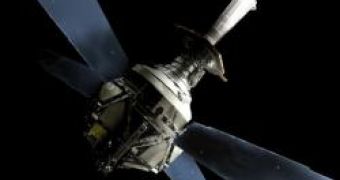Gravity Probe B is a NASA satellite currently in Earth's orbit, originally designed to measure relativistic effects predicted by Einstein's General Relativity Theory, such as frame dragging and the geodetic effect. It was launched in 2004 and relies on two high-precision gyroscopes to measure the two effects. The data it has collected to far cannot be used to extract any significant information because of high noise levels and unexpected gyroscope torque.
Simply put, a NASA review panel has recently catalogued Gravity Probe B as one of the worst of its 10 astrophysics satellites currently present in Earth's orbit. The mission will probably be canceled and will no longer receive funding starting September, when the current funds run out.
Gravity Probe B suffered multiple observation interruptions during March 2005, due to solar flare noise, and afterwards as the gyroscopes started experiencing additional torque, mimicking relativistic effects. The data provided by Gravity Probe B is in fact less accurate in measuring relativistic effects than the method used by astronomers directing beams of lasers towards the mirrors left on the surface of the Moon during the Apollo missions.
In NASA's review the first place was awarded to the SWIFT satellite, launched in 2004, studying gamma-ray bursts across the universe. The nine year old Chandra X-ray Space Telescope received the second place, but might receive a slight budget cut nonetheless.
The Spitzer Infrared Space Telescope scored the fifth place in NASA's review. It is expected that it will run out of cooling fluid by the end of the year. Helium is used to cool the telescope's sensors to 5.5 degrees above absolute zero, meaning that once it runs out of helium Spitzer will no longer be able to make observations in the long infrared wavelengths.
However, the environment will still keep it at an average temperature of 30 degrees above absolute zero, enabling it to make further observations in the 3.6 and 4.5 microns, still much more sensitive than any observatory on the ground. The missions will probably be extended by another three years, but the proposed budget of 110 million US dollars is likely to receive a significant cut.

 14 DAY TRIAL //
14 DAY TRIAL //